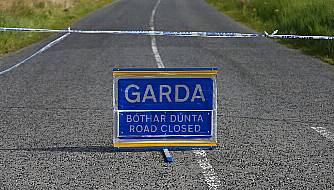Planning permission for the development of 30 apartments and more than 300 student bed spaces on the outskirts of Limerick City has been quashed by the High Court.
Environmental Trust Ireland (ETI) succeeded in its challenge to the strategic housing development, which had received fast-track approval from An Bord Pleanála in August of last year.
Mr Justice David Holland overturned the permission on a single ground, finding that the planning board failed to send ETI’s 100-page submission on the development to the local council within the required time limit.
The board’s delay in sending the submission caused the chief executive of the council to submit his report to the planning authority without referencing ETI’s points.
The four to six-storey blocks comprise 30 build-to-rent apartments and 70 further apartments catering for 326 student bed spaces on land at Punches Cross, which is currently occupied by a partially demolished petrol station and other disused buildings.
A previous application for virtually the same development by the same developer, Cloncaragh Investments Ltd, was refused in 2019 because the board was not satisfied then, beyond reasonable scientific doubt, that it would not negatively affect the integrity of various legally-protected areas nearby.
Concerns
For Cloncaragh’s subsequent application An Bord Pleanála’s planning inspector considered third-party concerns about contaminated lands at the site and noted it previously operated as a limestone quarry. She was satisfied that proposed mitigation measures, such as employing a specialist groundwater control contractor to implement a groundwater control scheme, were robust and sufficient to address the concerns.
The inspector concluded that the proposed development would not adversely affect the integrity of protected areas.
In his judgment, Mr Justice Holland held against ETI on its complaint that the board had not ensured that the proposed development would not adversely affect the integrity of the Lower Shannon River, which is a special area of conservation.
ETI alleged the proposed build would give rise to the leaching of cement and other on-site pollutants into groundwater, which would in turn flow to the protected area’s conservation objectives.

It claimed that an environmental screening of the proposal contained various inadequacies, including a failure to identify and consider the risk of cement entering the groundwater.
The board said it had reached the certainty threshold required in finding the development would not negatively affect protected areas. It submitted to the court that ETI must argue how the protected area’s objectives might be disturbed by alleged cement leaching.
In failing ETI on this ground of the challenge, the judge said it did not meet its light burden of proof in putting forward its complaint that there existed a risk of cement leaching that would affect a protected area.
It would be “pointless” if environmental screening required the identification and recording of non-existent risks for the purpose of recording them as non-existent, he said.







